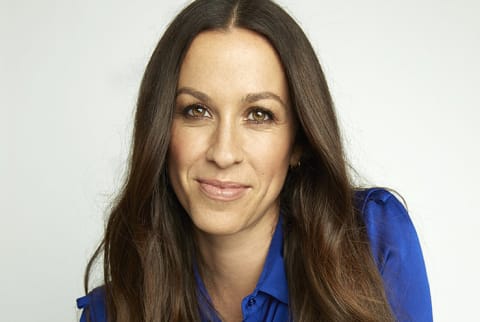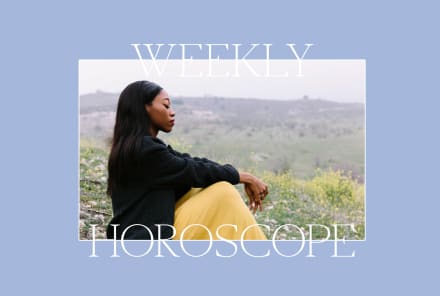Advertisement
How This Singer-Songwriter Tunes Into Her Body


I was taught very early on that some parts of my humanity were “allowed”— namely: being sweet, being affable, smiling, showing controlled joy, and being helpful.
And I was taught that some parts were “bad” — namely: feeling anger, feeling afraid, feeling sad, and speaking up when things seemed out of integrity or not life-affirming. THESE were not welcome.
So I learned to hide those parts by denying they existed, or by keeping them secretive — sometimes even to myself.
Sometimes, this proved to be too chronically painful. In order to keep these “bad” parts of me shut away, I had to ignore important messages from within my body.
When an emotion or a thought or an impulse emerged, I would disassociate, numbing myself with food, obsessive thoughts about people I was dating, or my usual go-to — work. My body’s “lights would stay on,” so to speak, but there would be “nobody home.”
The truth is that life is a holistic human experience.
Certainly there is good reason to manage our emotions, to contain urges that lead us to “not play well in the social schoolyard.”
Yet there are so many erroneous and needless messages sent to us about what we can or cannot do or be or feel as we move through life. The vast majority of these messages are simply not true.
We humans are ingenious at figuring out how to stave off pain or displeasure, and god bless us for this survival skill. It has kept some us alive during a traumatic time, event, or even an entire childhood.
There are many ways to stave off pain, or to “leave the body.” Some of the ways to do this that I know of (and have experienced many of) include television, food, surfing the web, drugs, alcohol, work, sex, even becoming obsessed with a person.
In and of themselves, these substances and processes and people are neutral. Doing their job well, even. The problem arises when they are used to keep us pain-free and despair-free; we get locked in the dire need for them, and our bodies can often rely on them beyond their initial purpose.
Let’s find ways to come back home, into the exquisite and unique body we were given to move through this life.
Ultimately, what once served as a way to relieve unwanted pain becomes the mechanism through which we remain perpetually estranged from ourselves. And the havoc that this lack of self-intimacy and self-knowledge can create permeates every area of our life.
These parts that we have cut off to “make it this far” are parts that we may now need to be able to love our spouses well, to create success as we deem it in our lives, to foster intimacy, or to find a deep sense of peace of being here on the planet.
I have come up with my top favorite ways to “come back into my body.” They have served me well in what I call the “slow crawl back home.” Sometimes entertaining some of these has me come up against some profound fear … for laying down some of my survival strategies seems, well, at odds with my survival!
In those moments, I forget that life is different from when I was younger — that I have some agency now, that I am a grown woman, that I have resources and knowledge and hard-won wisdom now that I didn’t have such easy access to then. Or even as simple as the fact that I am not reliant upon someone older to keep me alive.
It is very important to take any of these suggestions through the filter of your discernment and proceed slowly if you want to investigate any of them — even getting explicit permission from the many parts within yourself that seek to protect you. Without this permission, the process could cause more harm than good. And you might proceed at a pace that could simply pour salt into a wound.
Some of the below are my favorites; feel free to add yours. Slowly and tenderly ... that is how I recommend you approach the inquiry process. Let’s find ways to come back home, into the exquisite and unique body we were given to move through this life.
19 tools I use to come home to my body
- Massage that feels good (soft, medium, deep tissue, your call, always)
- Mindfully eating
- Hot baths, hot tubs, hot showers
- Deep-breathing exercises
- Body-scan exercises
- Nonsexual touch exercises with partner
- Consistent gentle grooming
- Gentle yoga
- Long walks in nature
- Somatic-experiencing therapy — by Peter Levine, or Bessel van der Kolk’s work — part of which includes a big emphasis on “noticing sensation” in a nonjudgmental way
- A workout that promotes proprioception — “help in the relative sense of positioning of parts of the body”
- Skin scrubs (for me, light ones!)
- Acupuncture
- Internal Family Systems Therapy by Richard Schwartz
- Qigong or tai chi
- Gentle stretching
- Cranial sacral work
- Dance (my personal favorite is 5rhythms)
- Mirror work (Louise Hay or The Body Image Workbook by Thomas Cash)
To learn more about Alanis' take on health and well-being, check out her podcast.
Watch Next
Enjoy some of our favorite clips from classes
Enjoy some of our favorite clips from classes
What Is Meditation?
Mindfulness/Spirituality | Light Watkins
Box Breathing
Mindfulness/Spirituality | Gwen Dittmar
What Breathwork Can Address
Mindfulness/Spirituality | Gwen Dittmar
The 8 Limbs of Yoga - What is Asana?
Yoga | Caley Alyssa
Two Standing Postures to Open Up Tight Hips
Yoga | Caley Alyssa
How Plants Can Optimize Athletic Performance
Nutrition | Rich Roll
What to Eat Before a Workout
Nutrition | Rich Roll
How Ayurveda Helps Us Navigate Modern Life
Nutrition | Sahara Rose
Messages About Love & Relationships
Love & Relationships | Esther Perel
Love Languages
Love & Relationships | Esther Perel

















